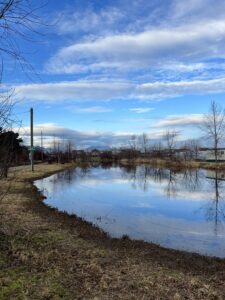
Identifying the Organism or Attribute
Organism or Attribute: Moss species in the swamp community (e.g., Sphagnum rubiginosum).
Observing Along an Environmental Gradient
Gradient: Swamp microhabitats characterized by moisture levels and pH.
Locations Along the Gradient:
High-moisture zone: Close to open water with saturated soil.
Moderate-moisture zone: Transitional area between water and upland, with intermittently wet soil.
Low-moisture zone: Edge of the swamp, where soil remains moist but not saturated.
Observations to Record:
Distribution: Presence/absence or density of different moss species.
Abundance: Cover percentage or biomass in quadrats (e.g., 1 m² plots).
Character: Structural traits such as height, color (indicative of health), and moisture retention capacity.
Postulated Hypothesis and Prediction
Hypothesis: Moss species richness and abundance are positively correlated with moisture levels in the swamp due to higher water availability facilitating nutrient uptake.
Prediction: The abundance and diversity of moss species will be highest in the high-moisture zone, moderate in the transitional zone, and lowest in the low-moisture zone.
Variables
Response Variable (Dependent):
Variable: Moss species abundance (e.g., number of species per quadrat or percentage cover).
Type: Continuous (e.g., species richness as a count, cover as a percentage).
Explanatory Variable (Independent):
Variable: Moisture level (e.g., soil water content measured as volumetric water percentage).
Type: Continuous (precisely measured as a gradient).
Alternatively, categorical explanatory variables could be:
Environmental zone (e.g., high, moderate, low moisture).
Experimental Design Summary
Select three locations along the gradient and place equal-sized quadrats (e.g., 1 m²).
Measure the response variable (e.g., abundance, richness, cover) in each quadrat.
Measure the explanatory variable (e.g., soil moisture) at the same locations.
Analyze correlations or differences between zones to test the hypothesis.
Your question, hypothesis, prediction and environmental gradient look great. Are you suggesting only one replicate per zone though? I’d recommend a minimum of 5 per zone of your gradient. I look forward to seeing more details in your small assignment.